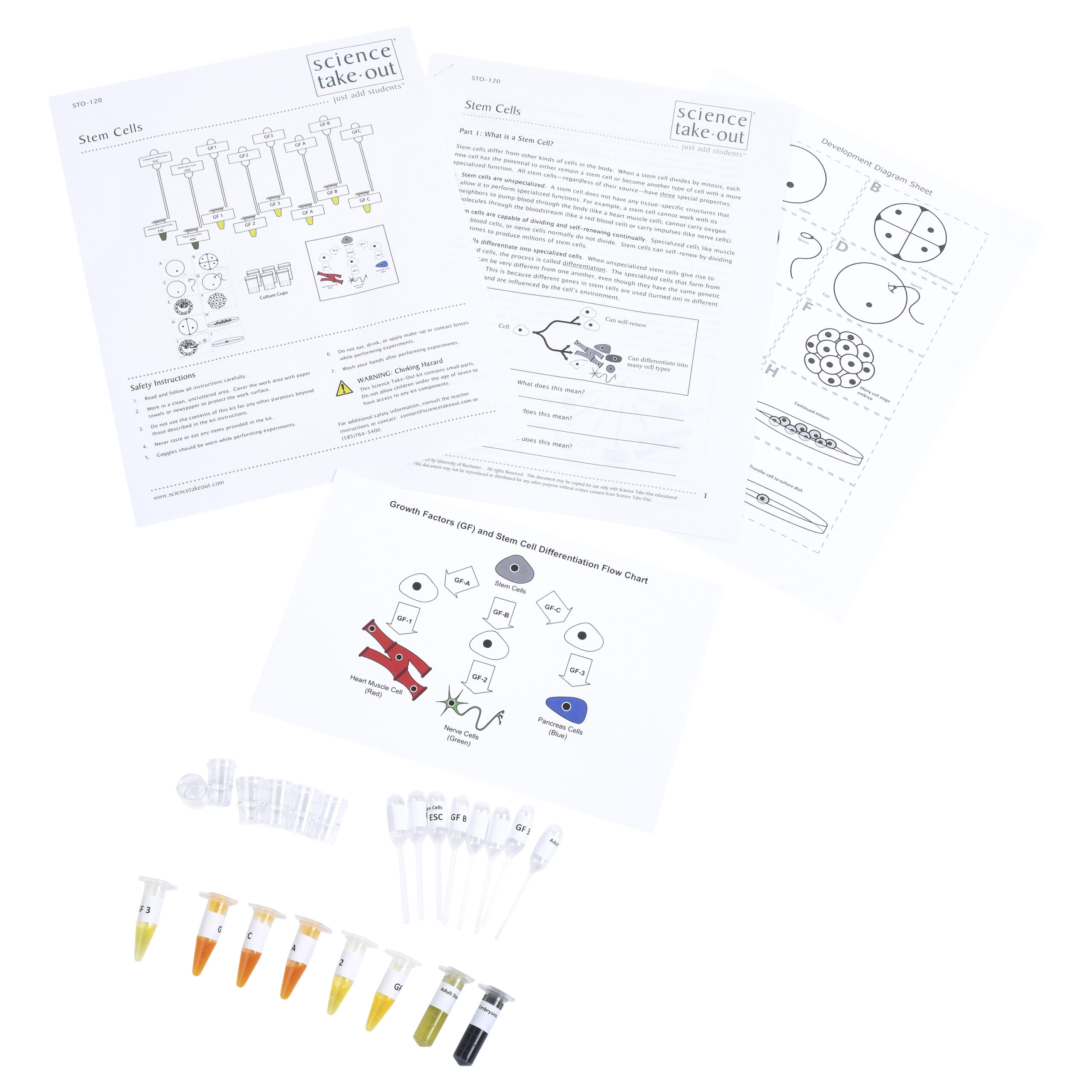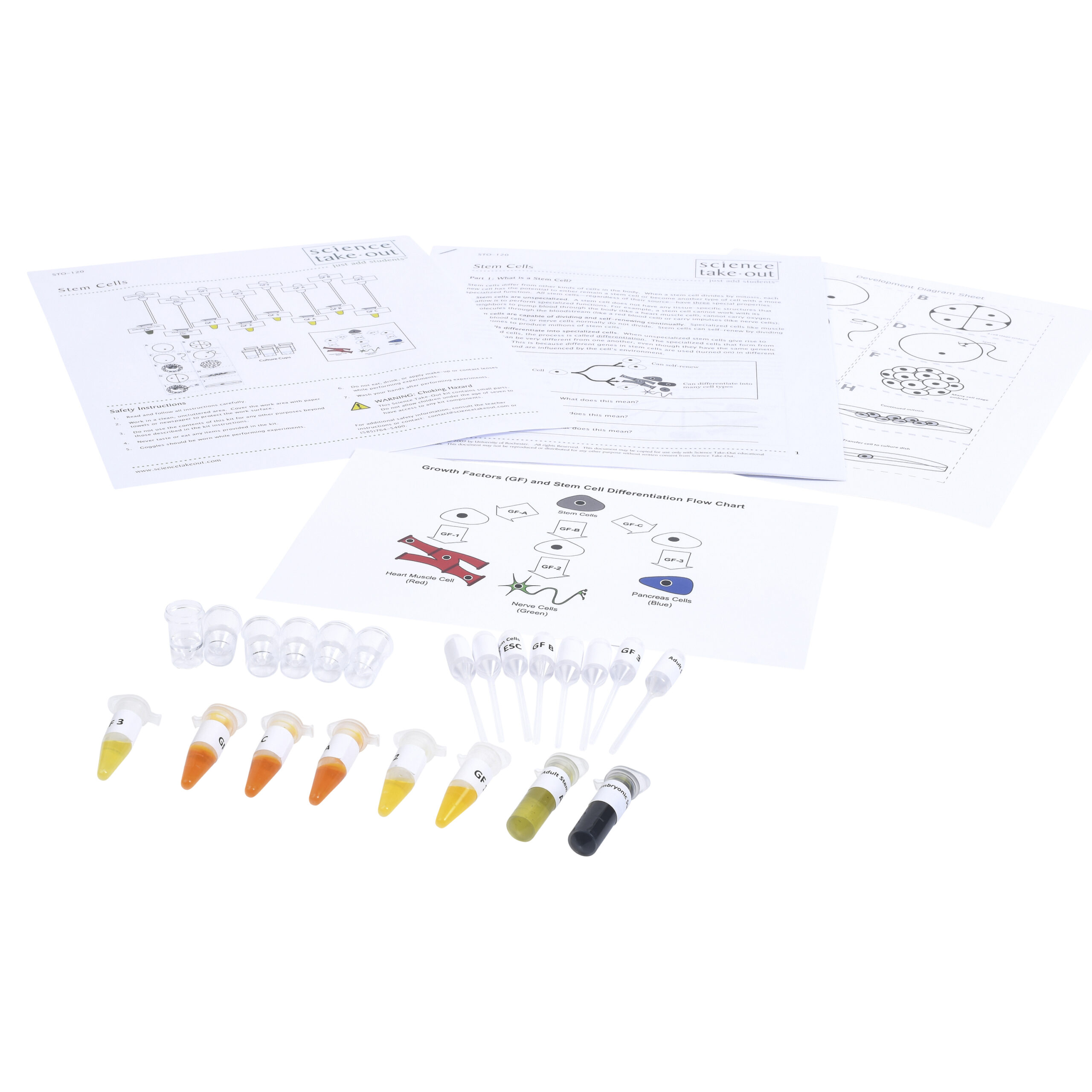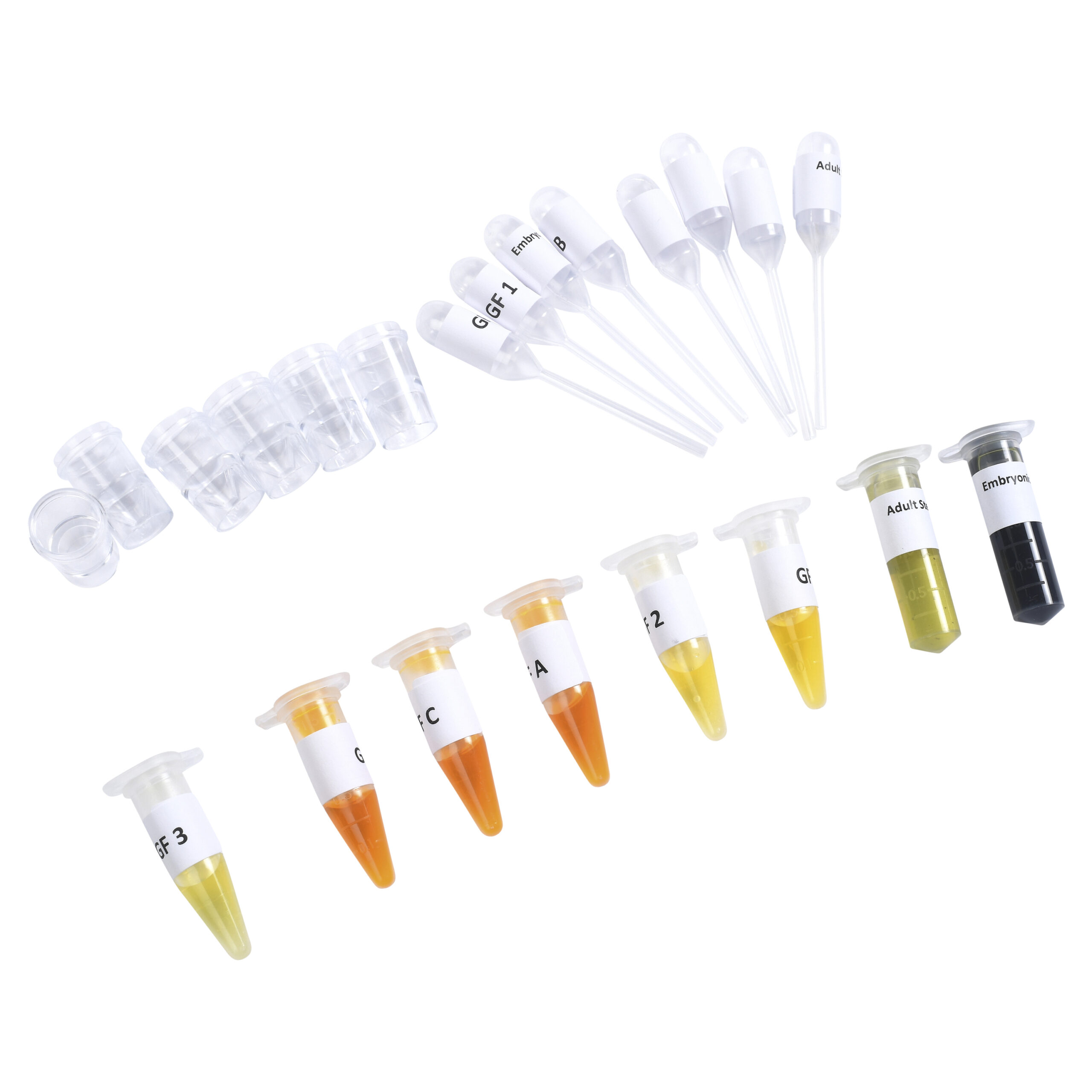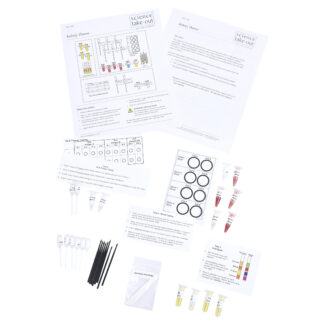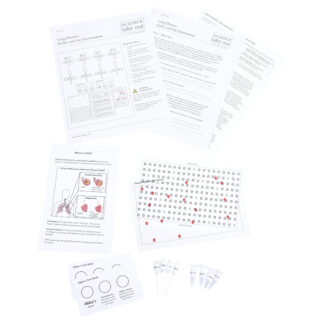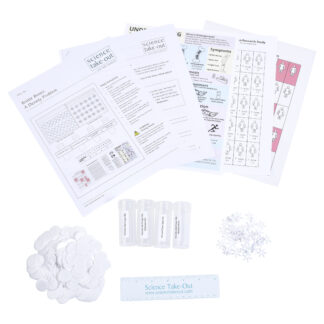Stem Cells
$15.95 – $104.95Price range: $15.95 through $104.95
Quantity Discounts Available! →
Learn how stem cells can be used to treat diseases.
Kit Includes
- Student instructions
- Development Diagram Sheet
- Growth Factors (GF) and Stem Cell Differentiation Flow Chart
- 1 tube of simulated “Embryonic Stem Cells”
- 1 tube of simulated “Adult Stem Cells”
- Tubes of simulated “Growth Factors” 1, 2, 3, A, B, and C
- 8 Labeled Droppers
- 6 culture cups
Quantity Discounts
Kits:
- 1 – 9 kits: $15.95 each
- 10 – 24 kits: $15.15 each
- 25+ kits: $14.36 each
Unassembled:
- 1 – 9 packs: $104.95 each
- 10+ packs: $99.70 each
Refills:
- 1 – 9 packs: $44.95 each
- 10+ packs: $42.70 each
Correlation to Next Generation Science Standards (NGSS) Shop by NGSS »
Performance Expectations:
HS-LS1-4. Use a model to illustrate the role of cellular division (mitosis) and differentiation in producing and maintaining complex organisms.
Science & Engineering Practices
Developing and Using Models - Use a model based on evidence to illustrate the relationships between systems or between components of a system.
Disciplinary Core Ideas
LS1.B:Growth and Development of Organisms - In multicellular organisms individual cells grow and then divide via a process called mitosis, thereby allowing the organism to grow. The organism begins as a single cell (fertilized egg) that divides successively to produce many cells, with each parent cell passing identical genetic material (two variants of each chromosome pair) to both daughter cells. Cellular division and differentiation produce and maintain a complex organism, composed of systems of tissues and organs that work together to meet the needs of the whole organism.
Crosscutting Concepts
Systems and System Models - Models (e.g., physical, mathematical, computer models) can be used to simulate systems and interactions — including energy, matter, and information flows — within and between systems at different scales.
